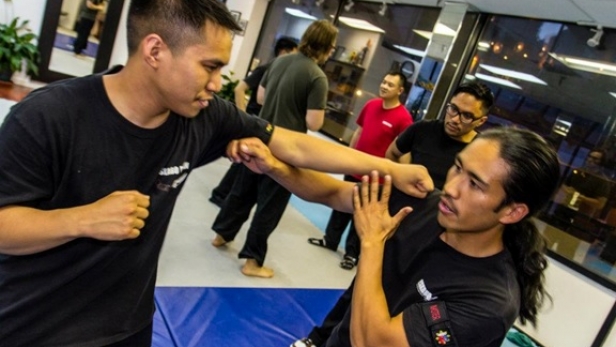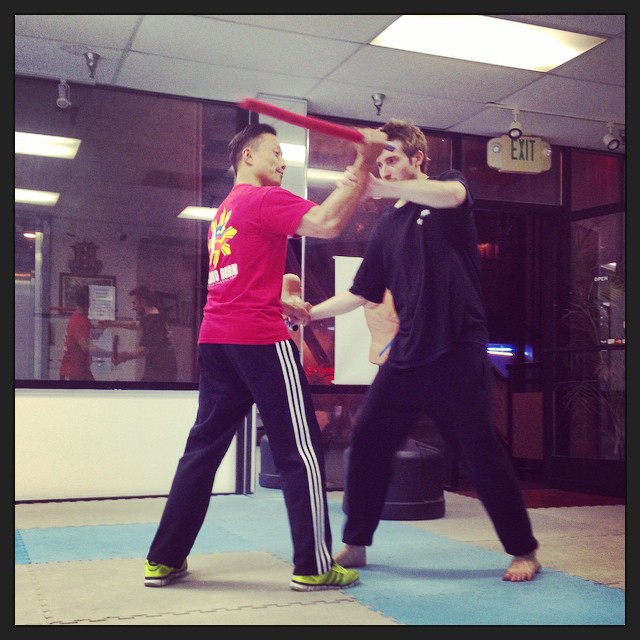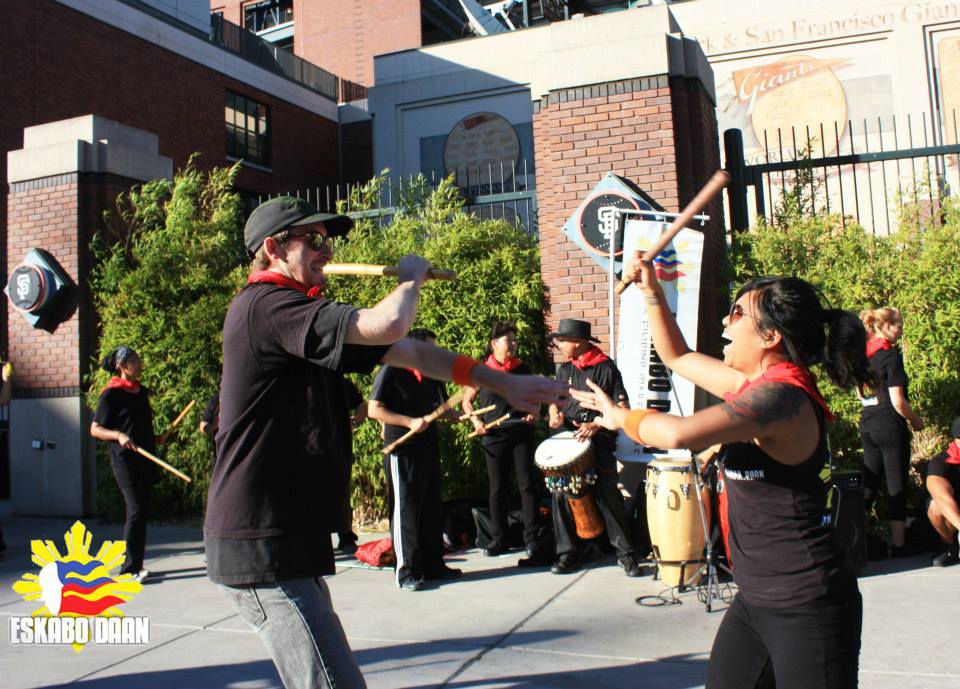Filipino Martial Arts
"This is a thinking man's art."
History
Origin
The history of the Philippines stretches all the way back as far as 900 AD. Examining the history of the Philippines as a nation, it is clear that martial arts have always been an essential part of the Filipino society. Many different cultures and migrants influenced the martial arts of the Philippines, like in many other places.
Settled in about 250 B.C by the Malays, in a first wave of migrations from the Southeast, they brought with them the weapon of the long knife. Although many weapons of different shapes and sizes were brought into the Philippines, the "Kris", a wavy bladed knife from the island of Java, was the first foreign weapon to be transplanted into the Filipino fighting arts. During the two more migrations that followed, these people were actually the ancestors of the present day Muslim-Filipinos of Mindanao and Sulu.
In 1518, Ferdinand Magellan convinced King Charles I of Spain that the Moluccas, then known as the Spice Islands, could be reached by sailing west. Magellan told the king that the Moluccas belonged to the Spanish side of the demarcation line drawn according to the Treaty of Torsedillas. The king agreed to send an expedition to the Spice Islands under the command of Ferdinand Magellan. On September 20, 1519, the expedition sailed southward across the Atlantic Ocean. Magellan reached the southernmost tip of South America, where he crossed the Pacific Ocean strait, otherwise now known as the Magellan strait. On March of 1521, he finally reached the Marianas. After resting, his men and obtaining provisions, Magellan continued his voyage and, on March 17th, 1521, sighted the mountains of Samar, marking their arrival in the Philippine Archipelago.
On April 28th, Ferdinand Magellan and his men waded ashore in knee high water to do battle with Raja LapuLapu and his men. The methodical historian at his side, Antonio Pigafetta recorded that LapuLapu's men were armed with fire-hardened sticks. In this battle, Magellan was slain by the chief Raja LapuLapu with a Kampilan by a blow to the leg and then a thrust to the neck.
In 1542 the group of islands was officially named Las Philippinas in honor of Prince Philip who later became King Philip of Spain (Philip II, 1556-1598). An explorer named Ruy Lopez de Villalobos, one of Magellan's predecessors takes credit for giving the place its name.
Spanish rule in the Philippines lasted until 1898 when Spain was defeated in the Spanish-American war. During this long period of colonization, the Spanish had some important effects on the Filipino culture. Firstly, most of the population was converted to Roman Catholicism with the exception for the Muslim Moros of the Sulu archipelago. Spanish fencing also had a direct effect on the fighting arts of the Philippines, with the introduction of the angles of attack, and the use of Espada y Daga. When the Spanish imposed a ban on the practice of all native fighting arts and the carrying of bladed weapons during their occupation of the islands, the Filipinos were forced to substitute the use of the sword with that of the rattan. In the beginning, the rattan was used to deliver strikes in the same manner as the blade i.e. slashing and thrusting, and the knife or short stick was still held in reserve as a back up weapon in case the opponent closed the distance, typical of its use by the Spanish. It was hardly ever used to block or parry an oncoming strike. However, through time, the Filipinos began to realize that because the stick had different handling qualities, certain lines of attack were open to them that were not available with the sword, for example, the curved and snapping strikes. Once they began to appreciate the combat effectiveness of the stick, the use of the knife also changed and began to be used more aggressively in terms of blocking, parrying, checking, scooping, thrusting and slashing. This in turn led to the creation of "Olisi y baraw", which is the stick and dagger.
Source: Seasite.niu.edu/Tagalog/
Modern History
The Philippines has what is known as a blade culture. Unlike in the West where Medieval and Renaissance
combative and self-defense blade arts have gone extinct (having devolved into sport fencing with the advent of
firearms), blade fighting in the Philippines is a living art. Local folk in the Philippines are much more likely
to carry knives than guns. They are commonly carried as tools by farmers, used by street vendors to prepare
coconuts, pineapples, watermelons, other fruits and meats, and balisongs are cheap to procure in the streets as
well as being easily concealed. In fact, in some areas in the countryside, carrying a farming knife like the
itak or bolo was a sign that one was making a living because of the nature of work in those areas.
In the language of Palau, the term for Filipino is chad ra oles which literally means "people of the knife"
because of Filipinos' reputation for carrying knives and using them in fights.
The arts had no traditional belting or grading systems as they were taught informally. In fact, it was said that to proclaim a student a "master" was considered ridiculous and a virtual death warrant as the individual would become challenged left and right to potentially lethal duels by other eskrimadors looking to make names for themselves. Belt ranking was a recent addition adopted from Japanese arts such as Karate and Judo which had become more popular with Filipinos. They were added in order to give structure to the systems and to be able to compete in attention for students -- Filipino martial arts were at the brink of extinction via obscurity with the general populace by the mid to late 20th century due to urbanization, modernization and colonial mentality (Filipinos' tendency to look down on things of local origin).
With regards to its spread outside the Philippines, eskrima was brought to Hawaii and California as far back as the 1920s by Filipino migrant workers. Its teaching was kept strictly within Filipino communities until the late 1960s when masters such as Angel Cabales began teaching it to others. Even then, instructors teaching eskrima in the 1960s and 70s were often reprimanded by their elders for publicly teaching a part of their culture that had been preserved through secrecy.
In recent years, there has been increased interest in eskrima for its usefulness when defending against knives and other street encounters. As a result, many systems of eskrima have been modified in varying degrees to make them more marketable to a worldwide audience. Usually this involves increased emphasis on locking, controls, and disarms, focusing mainly on aspects of self-defense. However, most styles follow the philosophy that the best defense is a good offense. Modern training methods tend to de-emphasize careful footwork and low stances, stressing the learning of techniques as opposed to more direct (and often lethal) tactics designed to instantly end an encounter.
Source: Wikipedia
Types of Filipino Martial Arts
Quick-Guide
| Name | Meaning | Techniques | Weapons |
|---|---|---|---|
| Eskrima/Kali/Arnis | "Blade", Fencing (Eskrima/Esgrima), Death (Kali) | Hand-to-hand combat,joint locks, grappling, weapon disarming | Sticks, knives, empty hands, improvised weapons (ex: sarongs) |
| Dumog/Buno | "Being mobbed" (dinudumog) | Grappling, pushes, pulls, weight shifts, and joint locks | Empty hands, body weight |
| Mano a Mano/Suntukan/Panantukan | Punch (Tagalog: Suntok), brawl, "The Art of Fist-Fighting" | Grappling, Boxing | Empty hands |
| Sikaran | Kick (Tagalog: Sikad), "I'm going to kick you" (Capampangan: sikaran daka) | Kicking non-vital parts first, with the second strike aiming at highly vulnerable points | Empty hands (mostly legs,feet), "pamatay" (lethal kick) |
Eskrima
(Also known as Kali or Arnis--depending on which province and family the art originated and developed from.)
Eskrima, Arnis,[1] and Kali are umbrella terms for the traditional martial arts of the Philippines
("Filipino Martial Arts," or FMA) that emphasize weapon-based fighting with sticks, knives and other
bladed weapons, and various improvised weapons.
It also includes hand-to-hand combat, joint locks, grappling and weapon disarming techniques.
Although in general, emphasis is put on weapons for these arts, some systems put empty hands as the
primary focus and some old school systems do not teach weapons at all.
Both eskrima and arnis are loans from Spanish and ultimately from Old Frankish:
Eskrima (also spelled Escrima) is a Filipinization of the Spanish word for fencing, (esgrima).
Arnis comes from arnes, Old Spanish for armor (harness is an archaic English term for armor which comes from the same roots as the Spanish term). It is derived from the armor costumes used in Moro-moro stage plays where actors fought mock battles using wooden swords. Allegedly, the practice of weaponry by the peasants or Indios was banned by the Spaniards during colonial times and the Moro-moro stick fights were a "disguised" form of continued practice of indigenous martial arts.
Kali:
- One belief is that the word comes from tjakalele, a tribal style of stick-fencing from Indonesia. This is supported by the similarities between tjakalele and eskrima techniques, as well as Mindanao's proximity to Indonesia.
- Kali may be a portmanteau of the Cebuano words "kamot", or "kamay" meaning hand in Tagalog, and "lihok", meaning motion.
- In the Ilocano dialect, kali means to dig and to stab. There exist numerous similar terms of reference for martial arts such as kalirongan, "kalibanga", kaliradman and pagkalikali These may be the origin of the term kali or they may have evolved from it.
- In his book KALI - History of a Forbidden Filipino Fighting Arts, Fred Lazo put forward that Kali was an ancient root word for blade, and that the Filipino words for right hand (kanan) and left hand (kaliwa) are contractions of the terms "way of the blade" (kali daanan) and "without blade" (kali wala) as weapons are usually held with the right hand and the left hand is typically empty.
- In their book Cebuano Eskrima: Beyond the Myth however, Dr. Ned Nepangue and Celestino Macachor contend that the term Kali in reference to Filipino martial arts did not exist until the 1960s when two well-known eskrimadors in the United States popularized it to distinguish what they taught from other styles. Since eskrima and arnis are derived from Spanish words, the preference for the term kali by foreigners may be due to its lack of a definitive foreign origin and an attempt to preserve authenticity of a name that has otherwise been lost to history.
- Practitioners of the arts are called eskrimador (male) or eskrimadora (female) for those who call their art eskrima, arnisador for those who call theirs arnis, and kalista or mangangali for those who practice kali.
Source: Wikipedia
Dumog - Wrestling/Grappling
Dumog is the Filipino style of wrestling while standing upright and refers to the grappling aspect of Filipino martial arts. The word dumog is most commonly used in Mindanao and the Visayas, while the word buno is used in Luzon, specifically in the Southern Tagalog-speaking provinces as far south as Mindoro. Techniques encompass a variety of pushes, pulls, weight shifts and joint locks designed to "move" the opponent, often taking advantage of their weight and direction of force to throw them off balance. It is also used colloquially as being mobbed (dinudumog).
Source: Wikipedia
Sikaran - Hand & Foot (Filipino Taekwondo)
Sikaran is a simple but intense martial art game that originated from the town of Baras in the province of Rizal. According to the forefathers of Baras, it had been practiced long before the Spaniards came to the Philippines in the 16th century.
It is noted that like most Filipino martial arts, Sikaran has no written history as most Filipinos from the lower classes during Spanish colonial times were barely literate (free public education was only introduced during the American era) and it was passed orally from generation to generation.
Like many Filipino martial arts styles, it has been endangered as it does not have as many practitioners as the more mainstream martial arts. Like Modern Arnis, in the mid-20th century, it had to adapt certain structural aspects of the more well known art of Karate like the belting system, choreographed forms or Katas and uniforms to make it more appealing other Filipinos and be more accepted internationally.
Source:Wikipedia
Mano a Mano - Hand to Hand
Mano Mano is the empty-hand component of Filipino martial arts, particularly eskrima. The term translates as "hands" or "hand to hand" and comes from the Spanish word mano (hand). It is also known as Suntukan or Panununtukan in Luzon and Pangamot in the Visayas, as well as De Cadena or Cadena de Mano in some FMA systems. American colonists referred to it as "combat judo".
Mano mano also includes kicking, punching, locking, throwing and Dumog (grappling). Filipino martial artists regard the empty hands as another weapon and all the movements of mano mano are directly based on weapon techniques. In eskrima, weapons are seen as an extension of the body so training with weapons naturally leads to proficiency in bare-handed combat. For this reason, mano mano is often taught in the higher levels of eskrima after weapons training has been mastered because advanced students are expected to be able to apply their experience with weapons to unarmed fighting. This not always the case though, as some systems of Eskrima start with (and at times only consist of) empty hands fighting.
Source: Wikipedia
Notable Figures
Masters
Great Grandmaster
Angel Cabales ✝
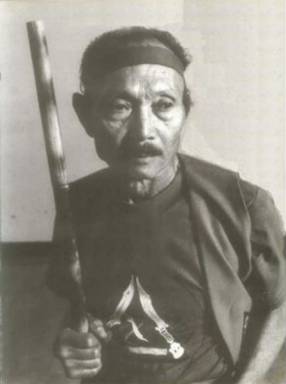
the Serrada Eskrima system
Grandmaster
Robert Castro

the Eskabo Daan system
Mangisursuro
Michael Inay ✝

Inayan System of Eskrima
Guro
Dan Inosanto
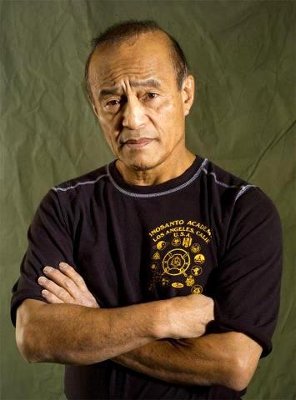
for the movie
"Game of Death"
Great Grandmaster
Ernesto Presas ✝
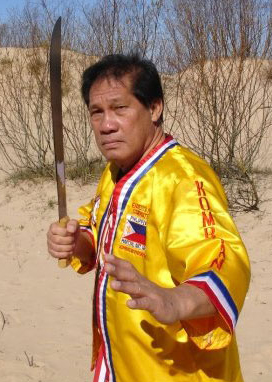
Kombatan
Grandmaster
Remy Presas ✝

Modern Arnis
Fictional Characters
Nightwing
Dick Grayson

Weapon: Eskrima Sticks (Serrada-style)
Talim
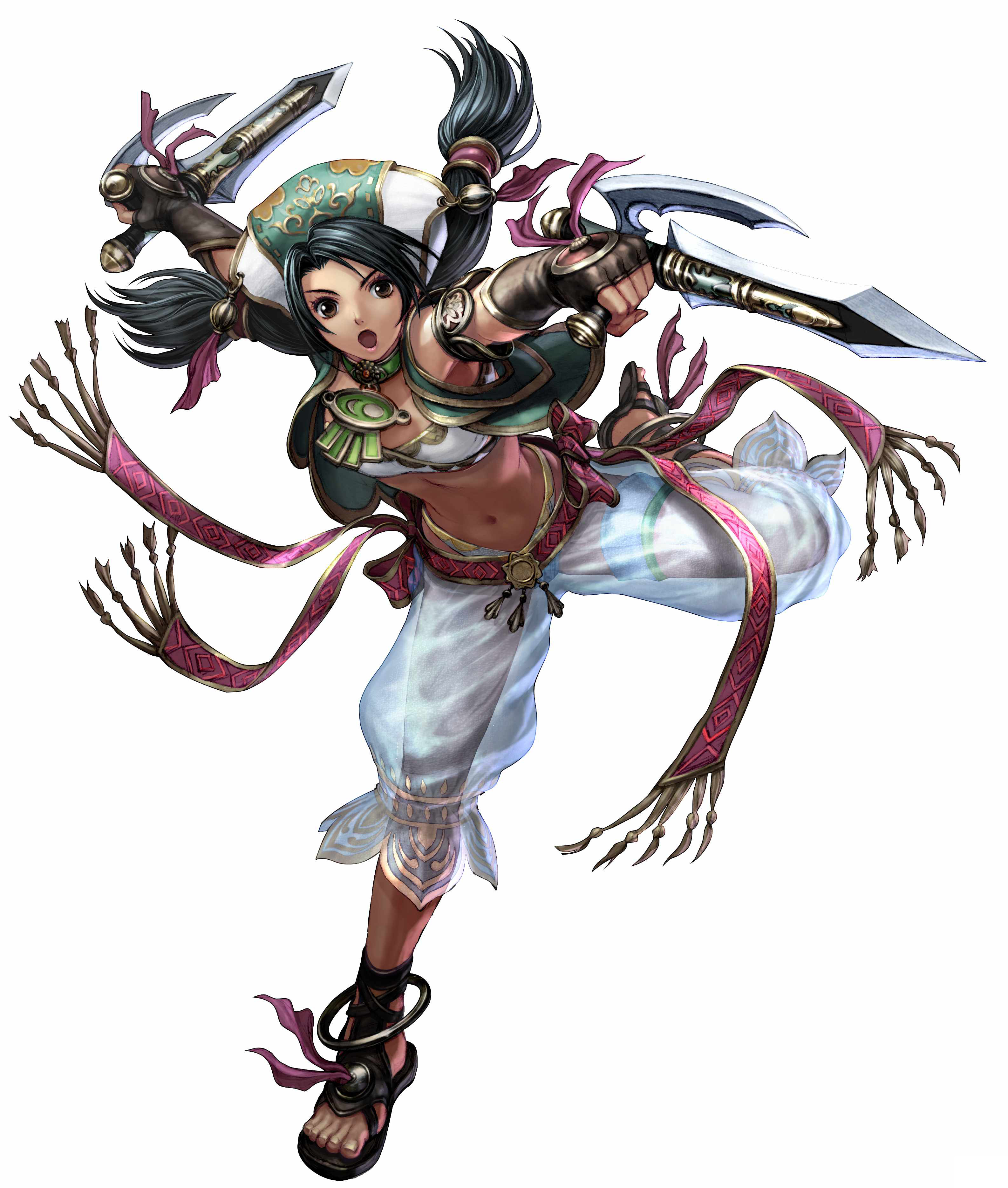
Weapon: Blades/Tonfa
Rinka Urushiba
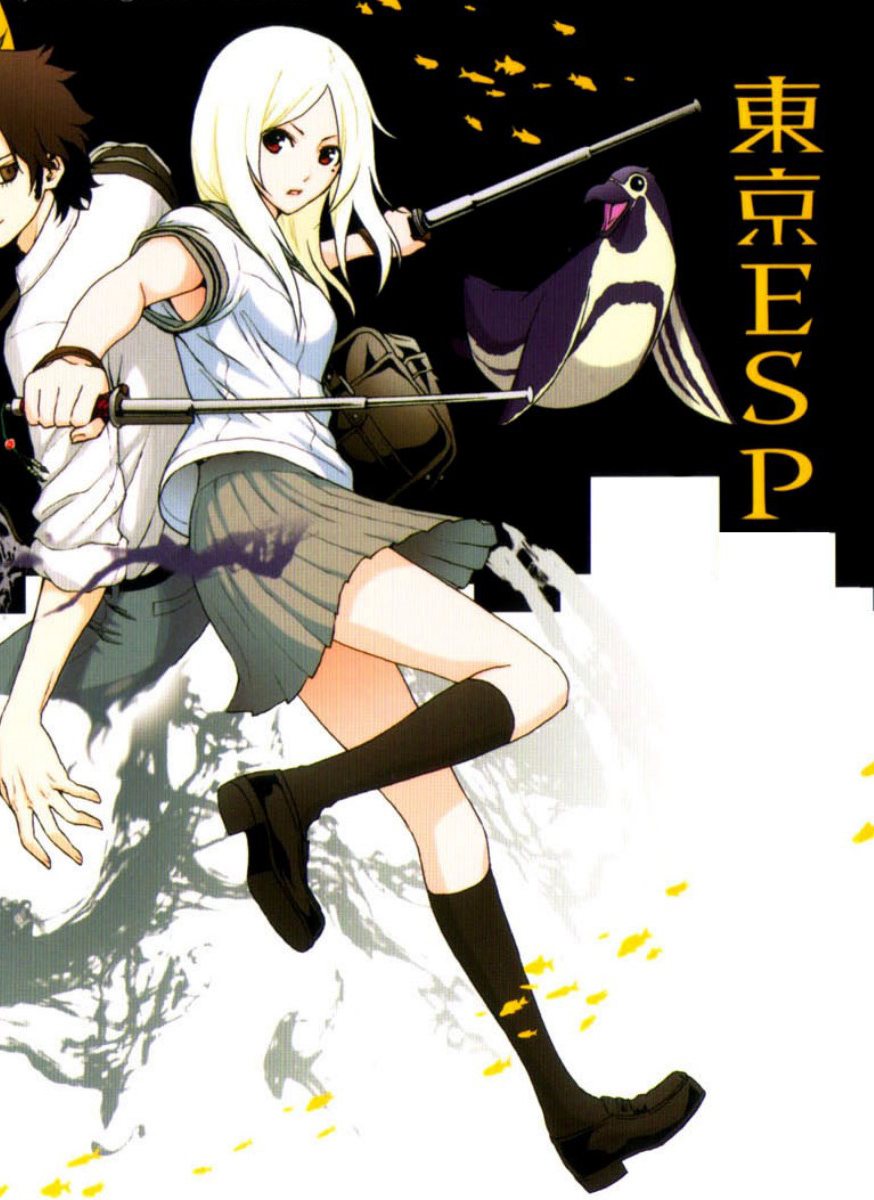
Weapon: Double Tactical Batons
Kickass
Dave Lizewski
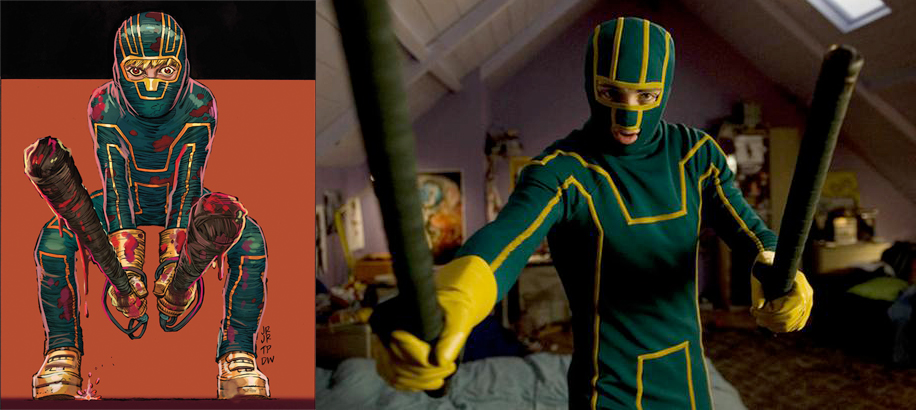
Weapon: Batons
Sonya Blade
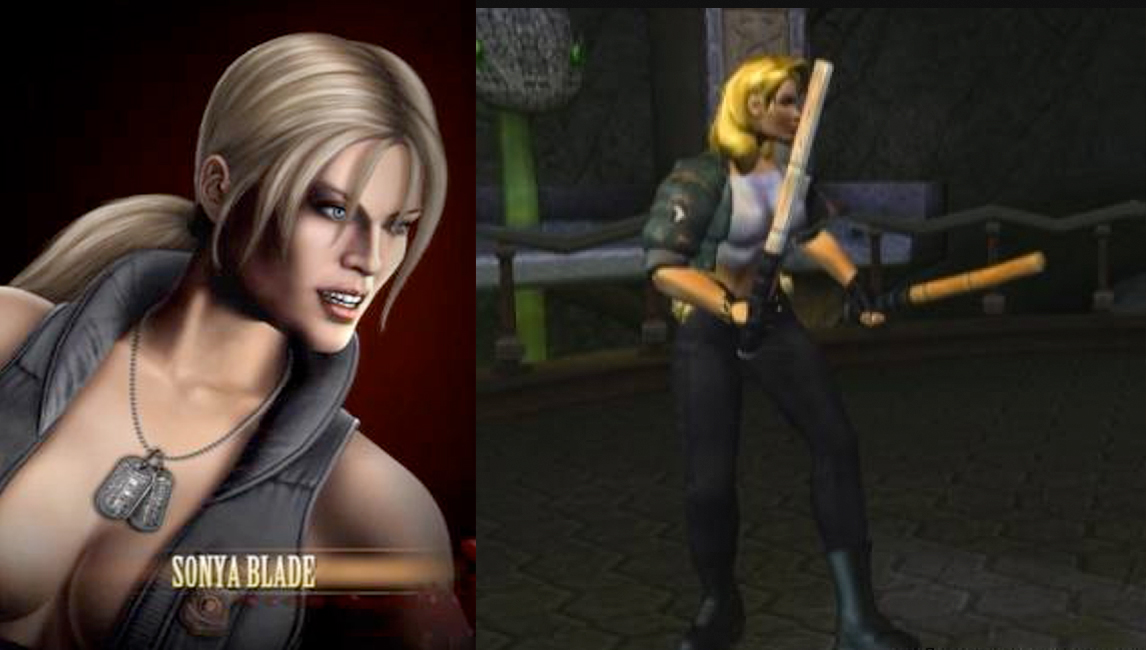
Weapon: Kali Sticks

